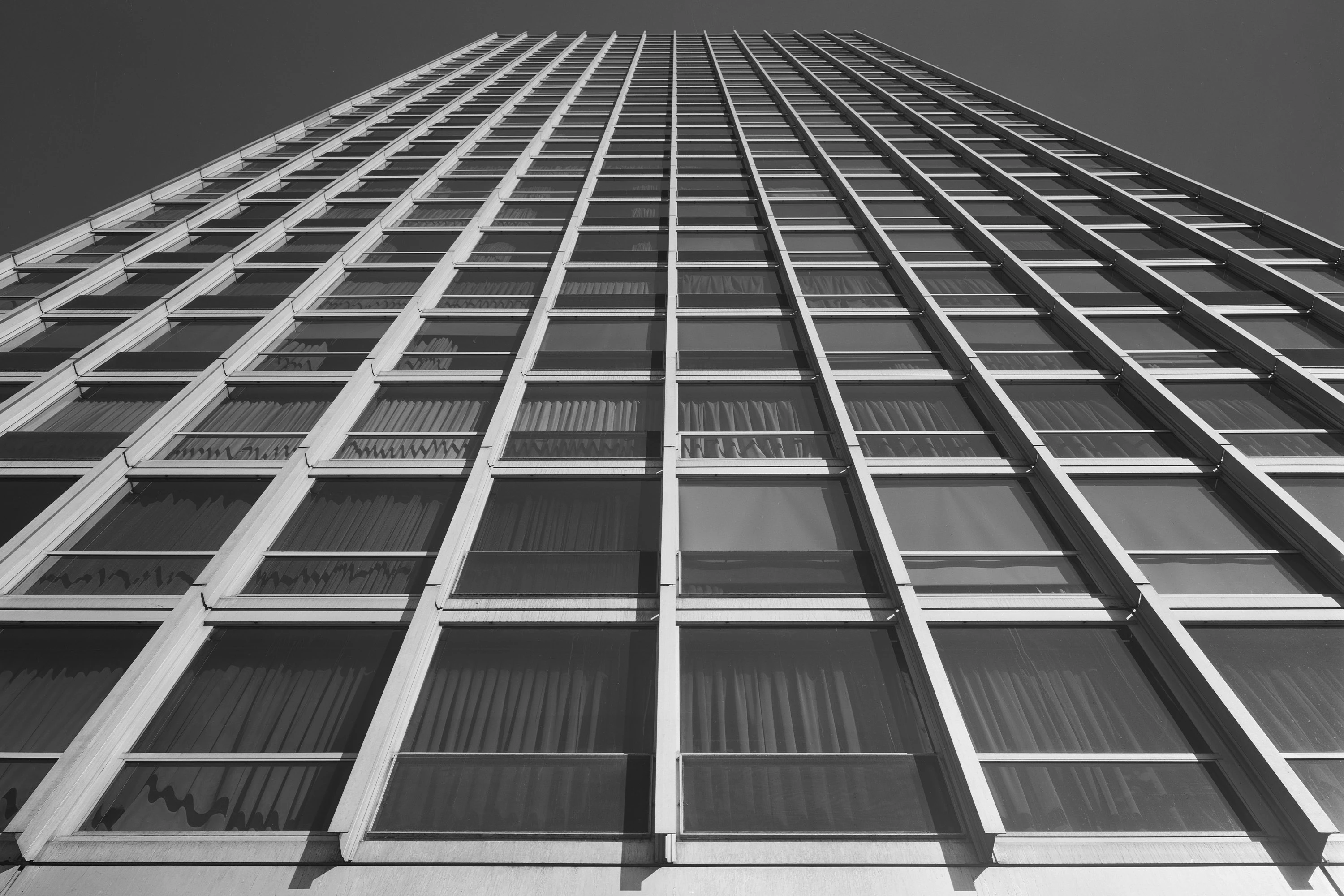Chicago Skyscraper Playing Cards
Illustrated by Wonder City Studio, the Chicago Skyscraper Playing Cards showcase the evolution of the skyscraper from the late nineteenth to the early twenty-first centuries.

Commonwealth Promenade Apartments by Mies van der Rohe, c. 1956–59. (Hedrich-Blessing Collection, Chicago History Museum.)
The Chicago Skyscraper Playing Cards trace the evolution of the skyscraper typology from the late nineteenth through the early twenty-first centuries. Designed by Peacham, illustrated by Wonder City Studio, and produced in partnership with the Chicago Architecture Center, each deck showcases fifteen iconic Chicago buildings, including the Monadnock Building (1891–93), Marina City (1967), and the St. Regis (2020).

Ethan Herrington

Ethan Herrington
Chicago is widely regarded as the birthplace of modern architecture. From Daniel Burnham to Mies van der Rohe to Jeanne Gang, Chicago’s architects have continually pushed the limits of building design and construction. This legacy dates back to the late nineteenth century, when a group of Chicago architects and engineers played a pivotal role in the development of the skyscraper. “The Chicago Skyscraper Playing Cards are a tribute to the evolution of this building type, and to the city itself — without which today’s world would look very different,” says Christopher Devine, founder of Peacham.
Chicagoans have a funny habit of claiming that the Home Insurance Building, designed by William Le Baron Jenney in 1885, was the world’s first skyscraper. Like most origin stories, this is a dubious claim. See, for example, Jason Barr’s Peacham article: The Jenney Myth: Fabricating the World’s First Skyscraper.

Manhattan Building, 1963. (Harold Allen, Historic American Buildings Survey, Library of Congress.)

Monadnock Building, 1963. (Cervin Robinson, Historic American Buildings Survey, Library of Congress.)

Gage, Keith, and Ascher Buildings, 1965. (Perry E. Borchers, Historic American Buildings Survey, Library of Congress.)

Manhattan Building, 1963. (Harold Allen, Historic American Buildings Survey, Library of Congress.)

Monadnock Building, 1963. (Cervin Robinson, Historic American Buildings Survey, Library of Congress.)

Gage, Keith, and Ascher Buildings, 1965. (Perry E. Borchers, Historic American Buildings Survey, Library of Congress.)
Illustrated by Wonder City Studio
The playing cards feature fifteen illustrations by Wonder City Studio, a studio that creates artwork honoring the architecture and history of places worth preserving. Collectively, the illustrations depict the wide variety of architectural styles seen throughout Chicago including the Chicago School, Venetian Gothic, Spanish Colonial Revival, Gothic Revival, Art Deco, the International Style, Modern, and Contemporary.

Ethan Herrington

Ethan Herrington
“The skyscrapers showcased in this deck represent great contributions to the world of architecture,” says Phillip Thompson, founder of Wonder City Studio. “Equally important, these buildings are a source of pride for so many Chicagoans. We hope that this deck inspires both locals and visitors to explore Chicago’s unmatched urban landscape.”

875 North Michigan Avenue, formerly the John Hancock Center, 1994. (Balthazar Korab, Library of Congress.)

Inland Steel Building, 1958. (Balthazar Korab, Library of Congress.)

Marina City, 1967. (Balthazar Korab, Library of Congress.)

875 North Michigan Avenue, formerly the John Hancock Center, 1994. (Balthazar Korab, Library of Congress.)

Inland Steel Building, 1958. (Balthazar Korab, Library of Congress.)

Marina City, 1967. (Balthazar Korab, Library of Congress.)
Typography by Klim Type
The design of the playing cards reflects the evolution of the skyscraper typology, tying together motifs from the nineteenth, twentieth, and twenty-first centuries. The cards are typeset in Söhne, a modernist sans serif family by Klim Type Foundry. Söhne’s letterforms are inspired by the typeface Akzidenz-Grotesk, first released by Berthold Type Foundry in 1898 and expanded upon nearly two dozen times throughout the early twentieth century.
“Söhne is a twenty-first-century digital expression of a twentieth-century version of a late nineteenth-century typeface,” says Christopher Devine. “It is a case study in the evolution of modernism, and it mirrors, step for step, the progression of the architectural styles depicted on the Chicago Skyscraper Playing Cards.”
For a more thorough history of Akzidenz-Grotesk, see Dan Reynolds, “New Details About the Origins of Akzidenz-Grotesk,” Klim Type Foundry Blog, November 10, 2019. For a similarly detailed account of Söhne’s origins, see Kris Sowersby, “Söhne Design Information,” Klim Type Foundry Blog, November 25, 2019.

Ethan Herrington

Ethan Herrington
The card backs feature an interlocking I-beam pattern that evokes structural steel, a defining characteristic of all skyscrapers. Peacham created the pattern using the capital ‘I’ in the typeface Pitch, also designed by Klim Type Foundry. The playing suits, also taken from Pitch, share a functionalist aesthetic with the I-beam pattern, including the bracketed serifs at the feet of the spade and club.








Each deck comes packaged in an elegant foil-stamped tuck box, and the I-beam pattern is blind embossed into the rear of the box. The cards are printed on premium paper stock and are designed to meet the needs of enthusiasts, collectors, magicians, and professional card-players alike.
Notes and References
Chicagoans have a funny habit of claiming that the Home Insurance Building, designed by William Le Baron Jenney in 1885, was the world’s first skyscraper. Like most origin stories, this is a dubious claim. See, for example, Jason Barr’s Peacham article: The Jenney Myth: Fabricating the World’s First Skyscraper.
For a more thorough history of Akzidenz-Grotesk, see Dan Reynolds, “New Details About the Origins of Akzidenz-Grotesk,” Klim Type Foundry Blog, November 10, 2019. For a similarly detailed account of Söhne’s origins, see Kris Sowersby, “Söhne Design Information,” Klim Type Foundry Blog, November 25, 2019.
Project Credits
Illustrated by Wonder City Studio
Produced in Partnership with Chicago Architecture Center
Product Photography by Ethan Herrington
Designed by Peacham
Project Credits
Illustrated by Wonder City Studio
Produced in Partnership with Chicago Architecture Center
Product Photography by Ethan Herrington
Designed by Peacham